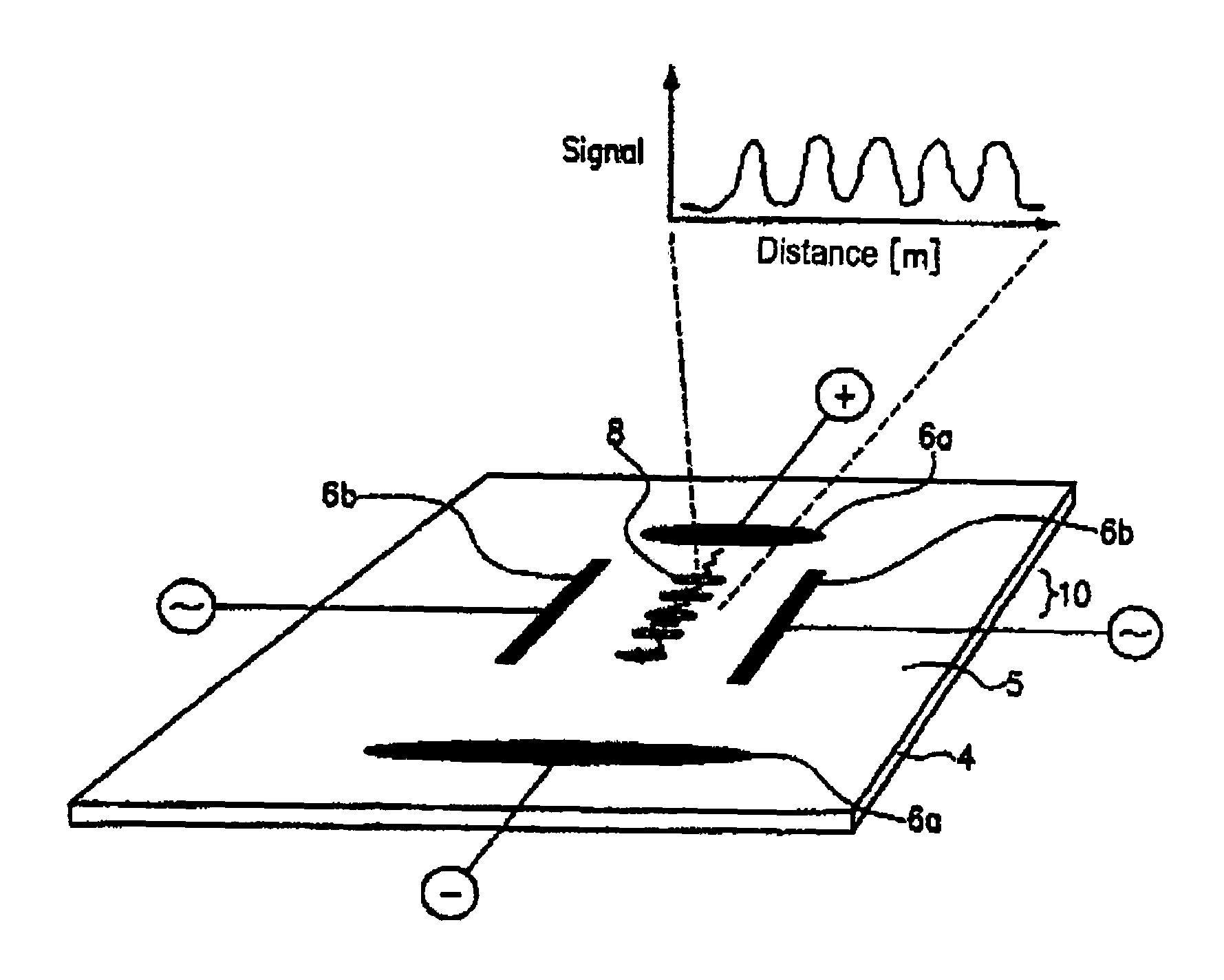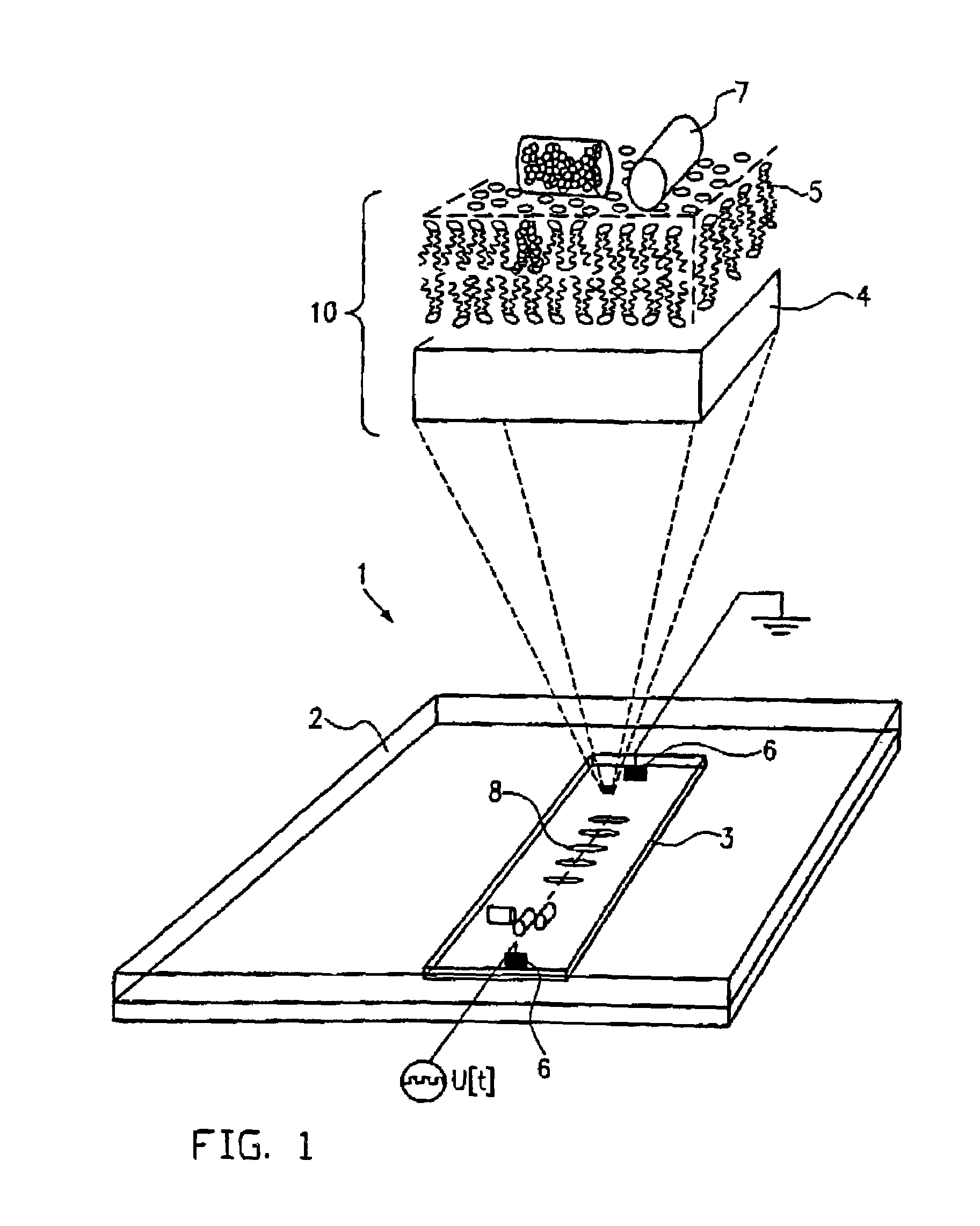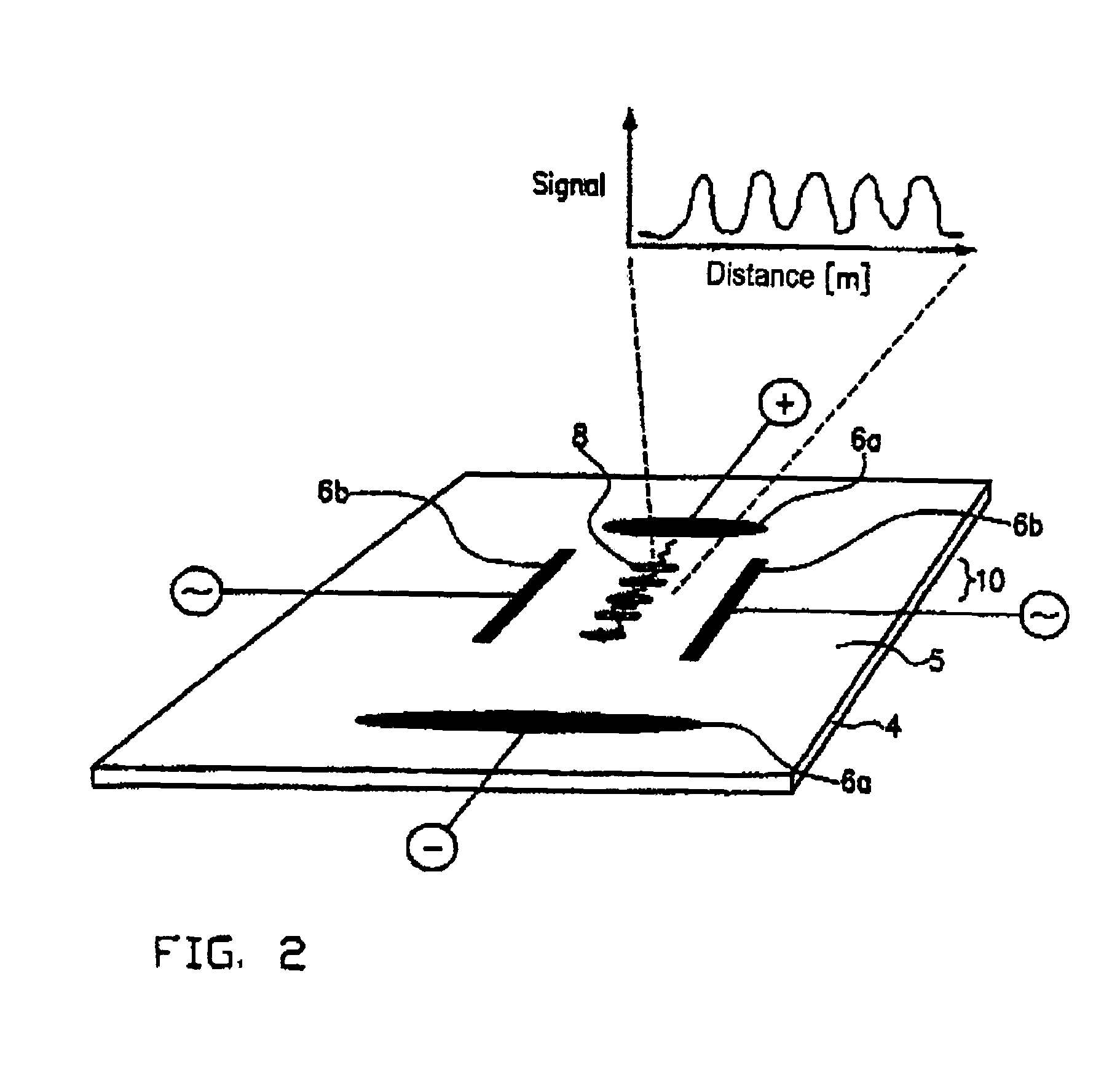Method and device for the electrophoretic separation of particles, especially of macromolecules, by electrophoresis
a particle and electrophoresis technology, applied in the field of macromolecules, can solve the problems of large amount of sample material required for analysis, large amount of time required for preparing and carrying out electrophoresis, and long usual electrophoresis path, so as to improve the resolution
- Summary
- Abstract
- Description
- Claims
- Application Information
AI Technical Summary
Benefits of technology
Problems solved by technology
Method used
Image
Examples
example 2
Preparation of a Cationic Monolayer or Bilayer by Means of a Langmuir-Blodgett Technique
[0081]By means of the Lanfmuir-Blodgett technique, a fluid membrane was applied to PMMA; instead of PMMA, also PC, PE, PS, PVA as well as cyclic olefins were used. In the Langmuir-Blodgett technique, amphiphilic molecules solved in chloroform are spread on the water surface of a trough made of teflon so that the hydrophilic portion of the molecule penetrates the water and the hydrophobic part projects from the water. This system can be compressed to the desired lateral pressure by means of an appropriate barrier. If now a vertically oriented platelet made of the above-mentioned materials is dipped into the water through this film, a fluid monolayer forms on the surface of the platelet.
[0082]The same experiments as in example 1 were carried our with this substrate supported membrane and the same results were obtained.
example 3
[0083]A substrate supported membrane according to Example 1 or Example 2 was prepared.
Separation of the DNA by Cross Fields
[0084]Contrary to the first and second examples, cross fields, i.e. a constant field superimposed by an alternating field instead of a pulsed field was applied for the separation of the DNA80 bp and the DNA 40 bp.
[0085]To this end, the constant field exhibited a field strength between 2 and 200 V / cm, the AC voltage field had a field strength between 2 and 200 V / cm at a frequency from 0.1 to 100 Hz. Thereby, platinum / platinum black or alternatively Ag / AgCl electrodes were used.
[0086]The same experiments as in example 1 were performed with the substrate supported membrane and the same results were obtained.
example 4
[0087]A substrate supported membrane according to Example 1 or Example 2 was prepared
Separation of the DNA by Structuring the Substrate
[0088]The membrane is applied to a previously structured substrate as is shown, for example, in FIG. 3 and is described with reference to this Figure. This substrate comprised ripple marks or a roughness having a height of approximately 0.1 nm and a periodicity of about 100 nm. Moreover, the used substrates were transparent and had a thickness from 100 μm to 200 μm. The electrode assembly was driven as in Example 3.
[0089]The results received with this arrangement correspond to the result obtained in Example 3, wherein the relative distance between the bands was larger.
PUM
| Property | Measurement | Unit |
|---|---|---|
| height | aaaaa | aaaaa |
| height | aaaaa | aaaaa |
| depth | aaaaa | aaaaa |
Abstract
Description
Claims
Application Information
 Login to View More
Login to View More - R&D
- Intellectual Property
- Life Sciences
- Materials
- Tech Scout
- Unparalleled Data Quality
- Higher Quality Content
- 60% Fewer Hallucinations
Browse by: Latest US Patents, China's latest patents, Technical Efficacy Thesaurus, Application Domain, Technology Topic, Popular Technical Reports.
© 2025 PatSnap. All rights reserved.Legal|Privacy policy|Modern Slavery Act Transparency Statement|Sitemap|About US| Contact US: help@patsnap.com



